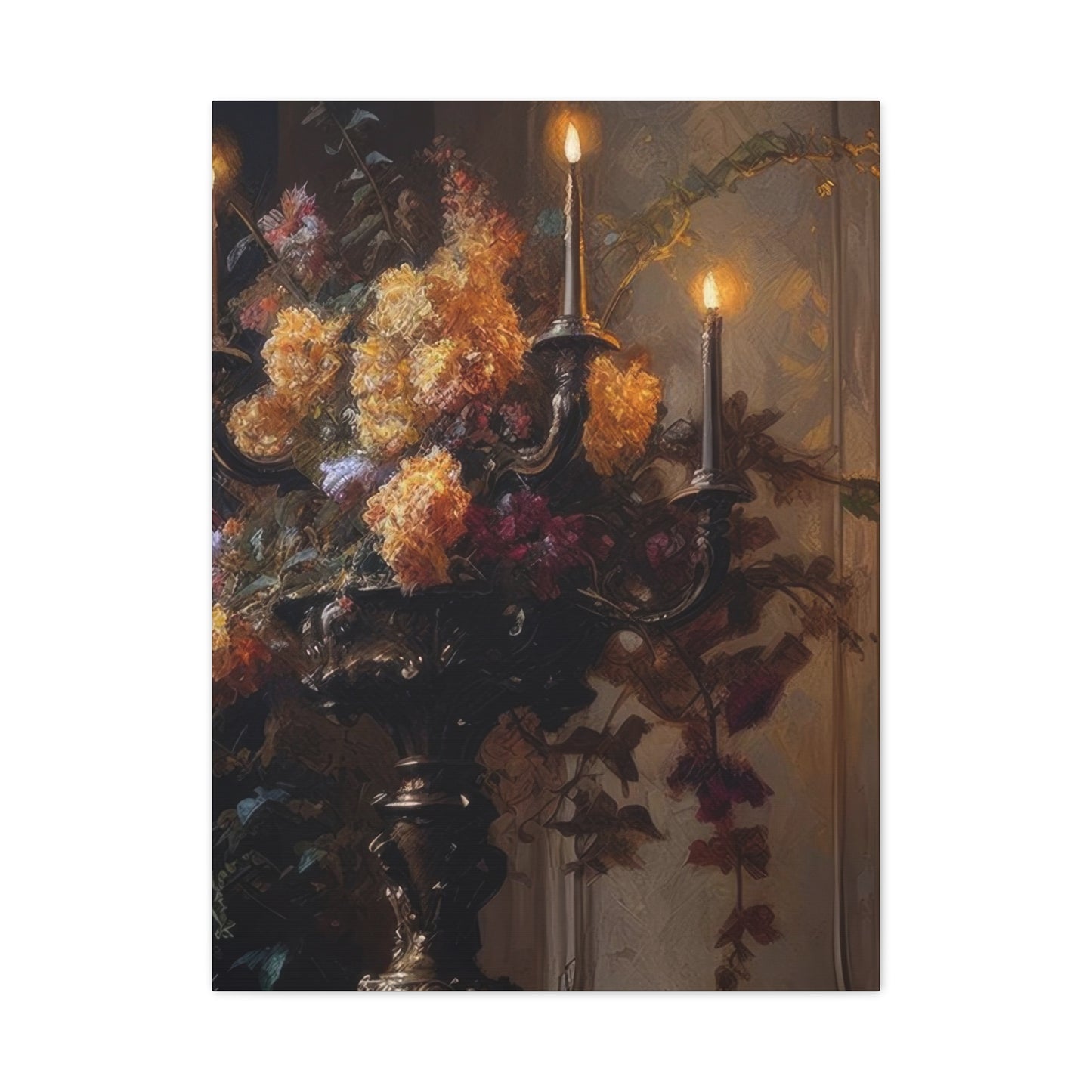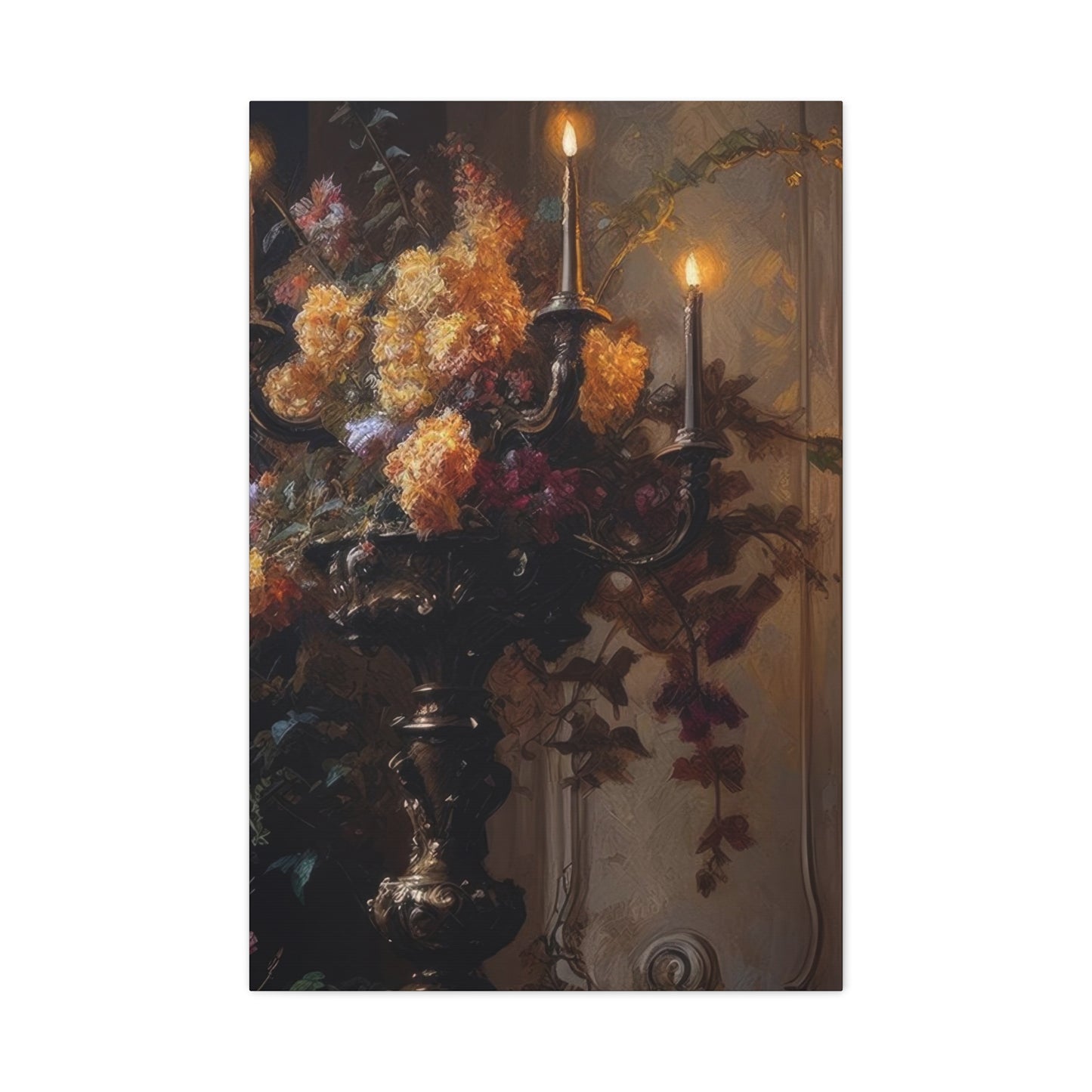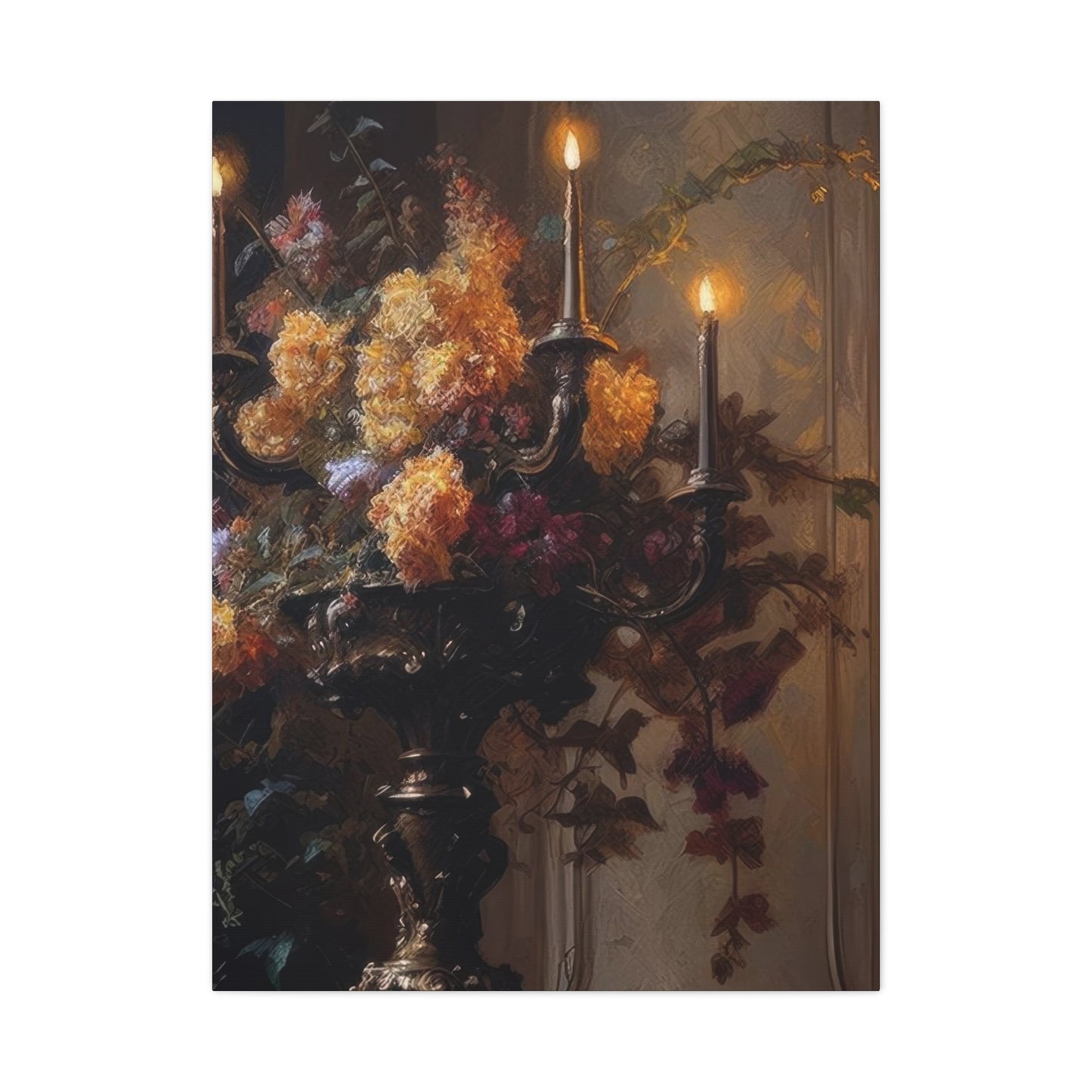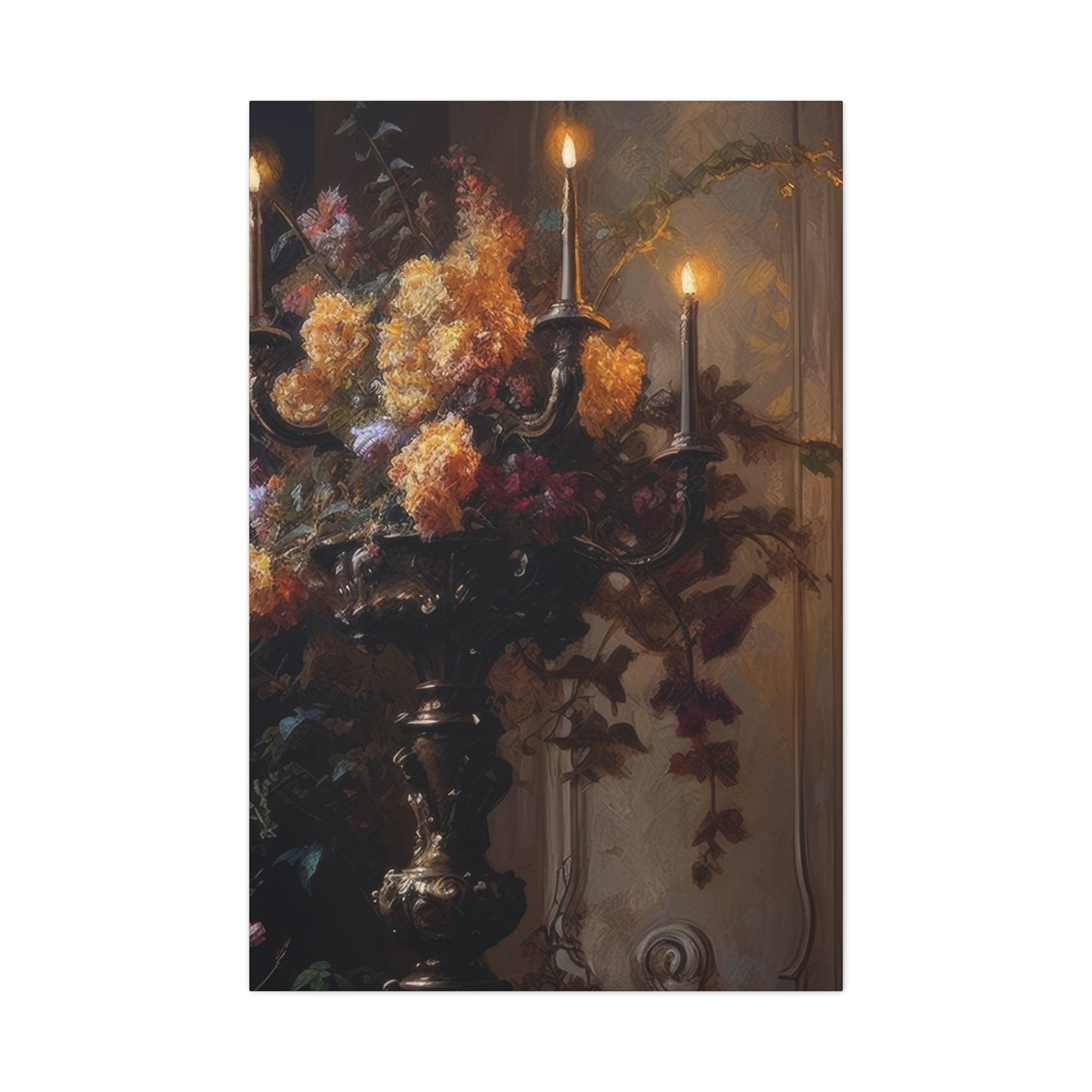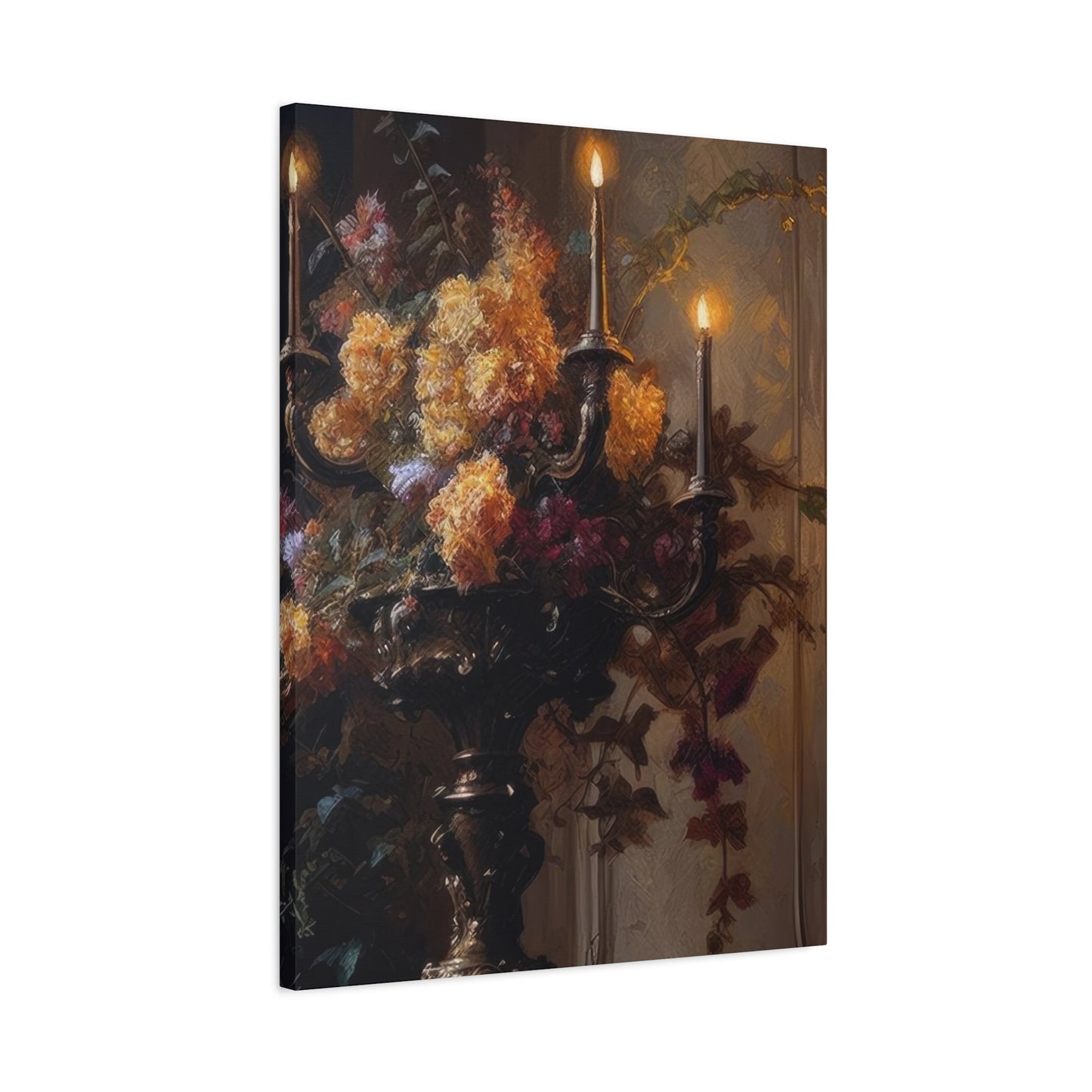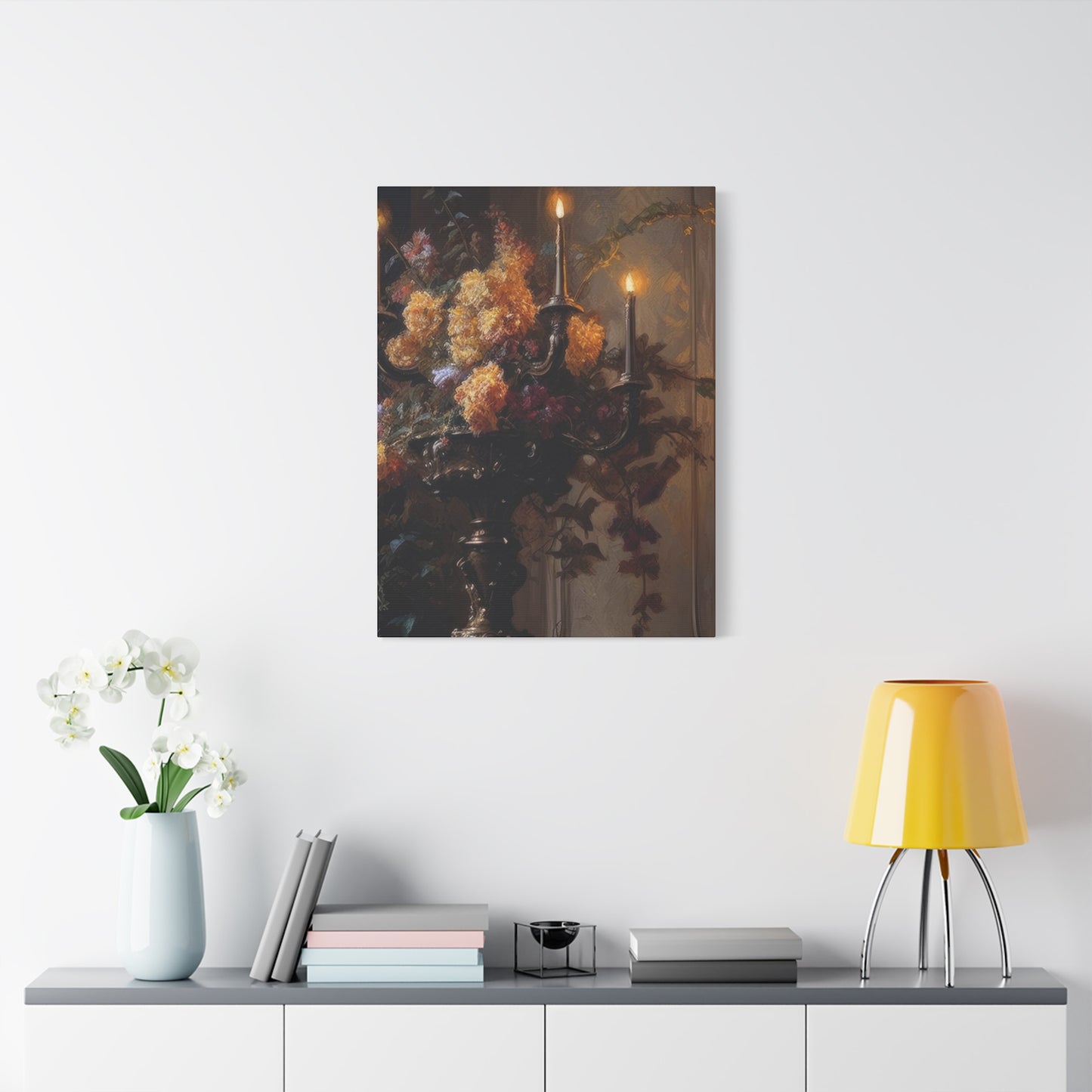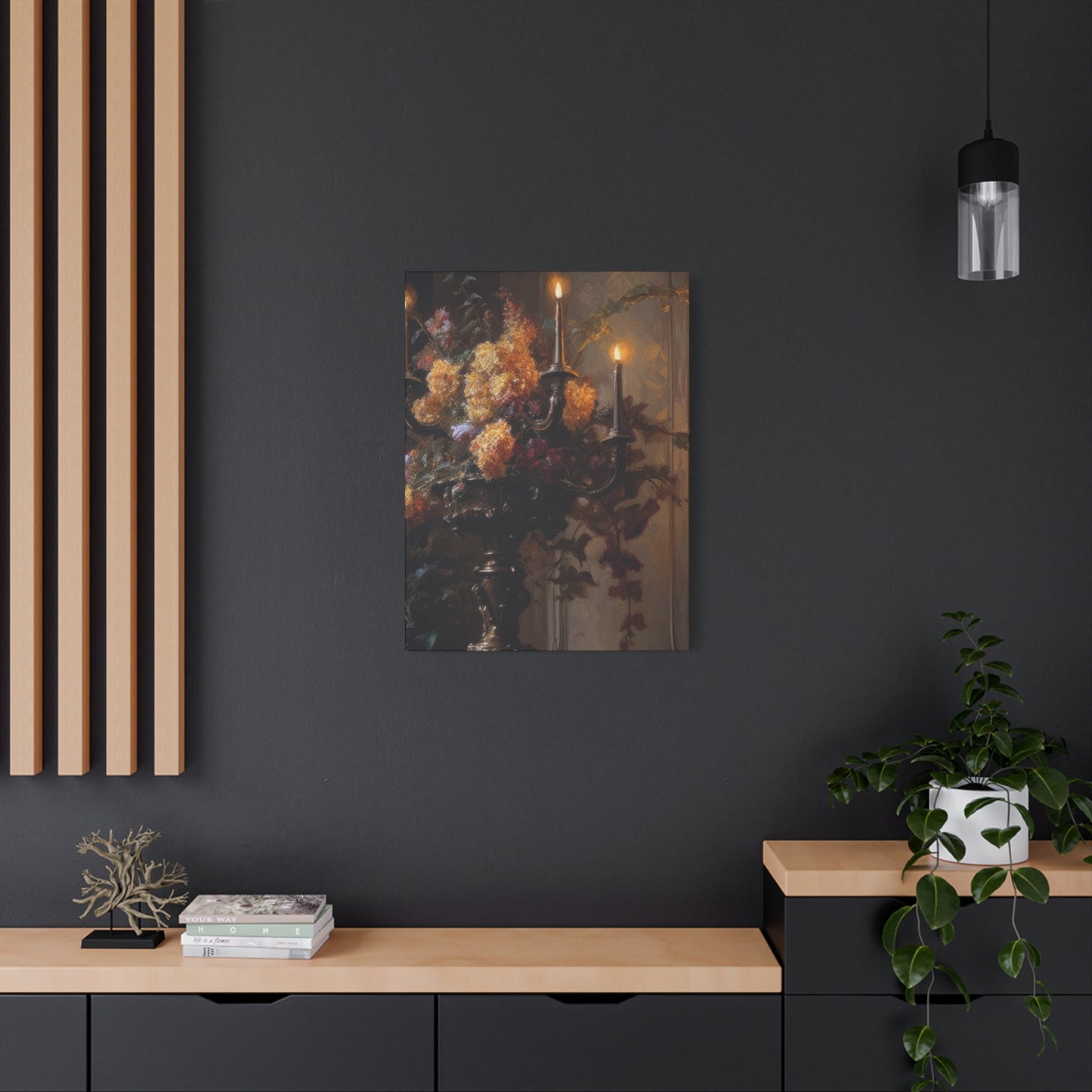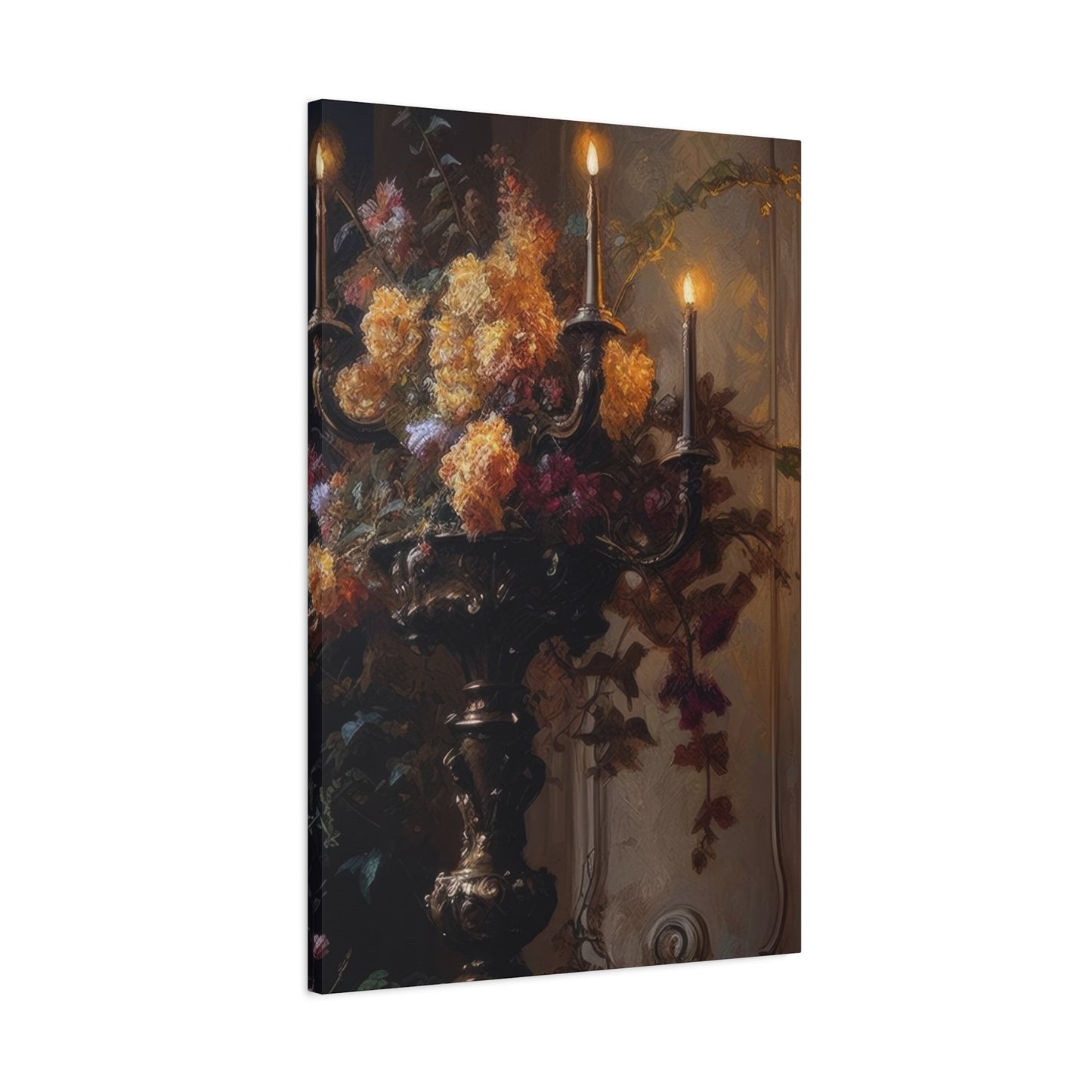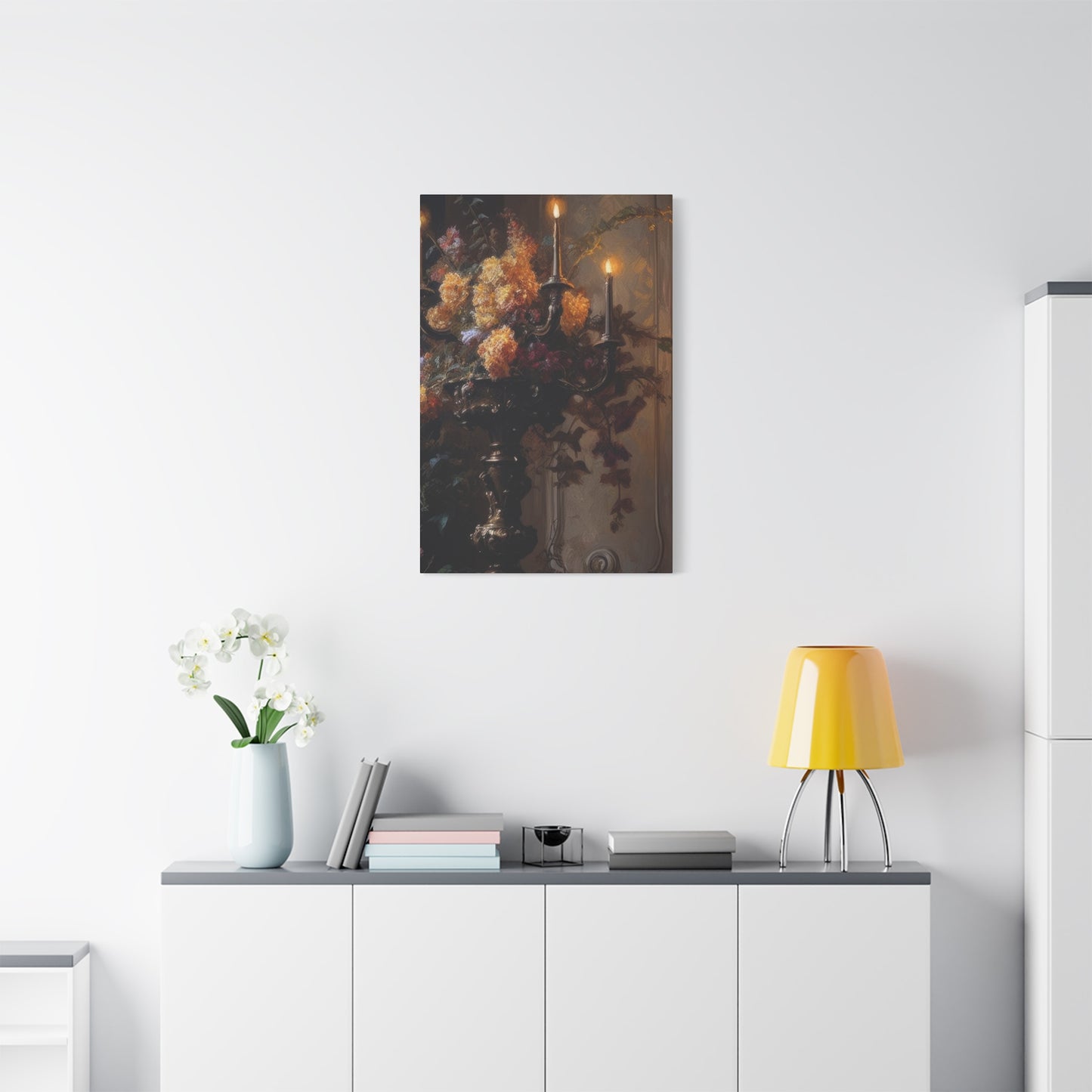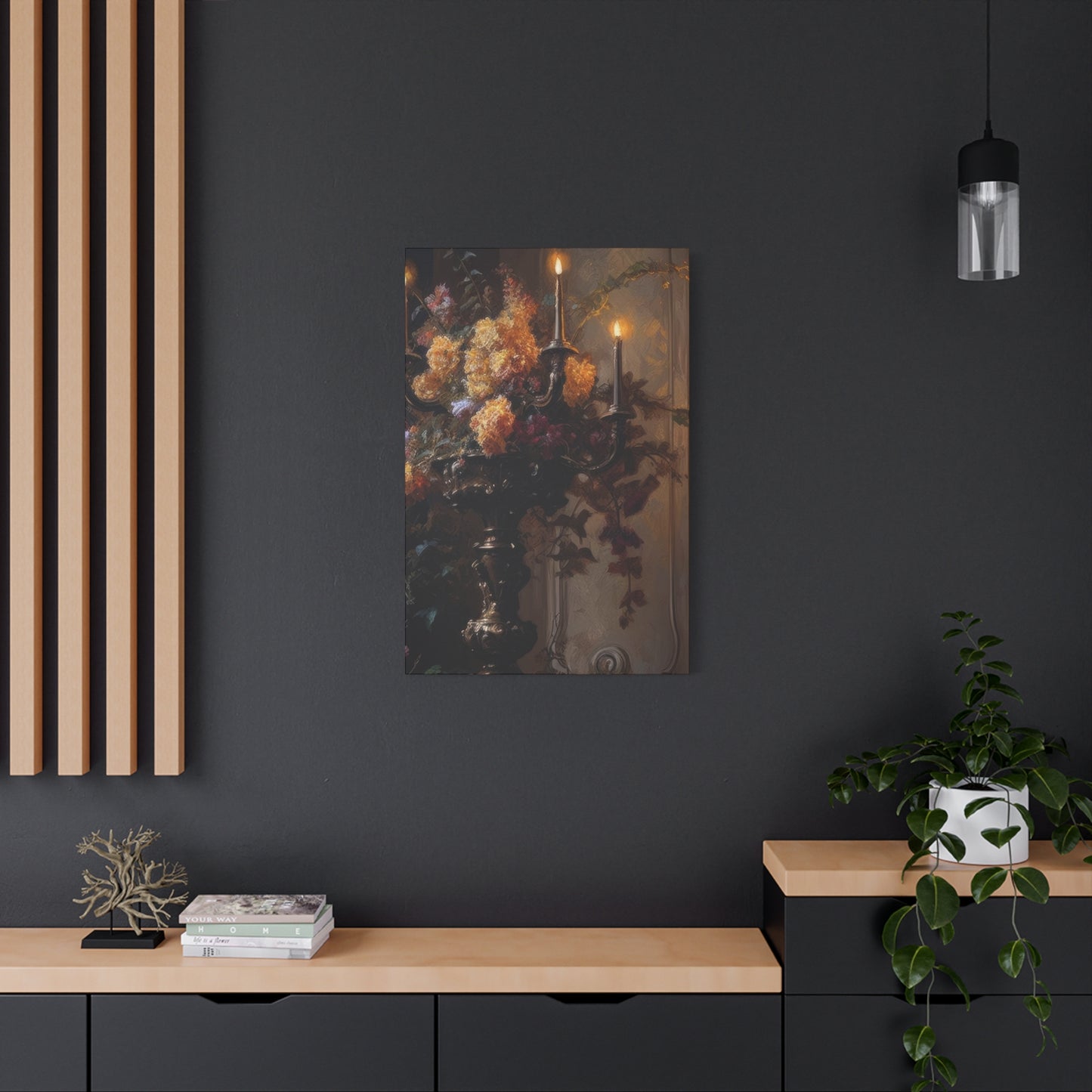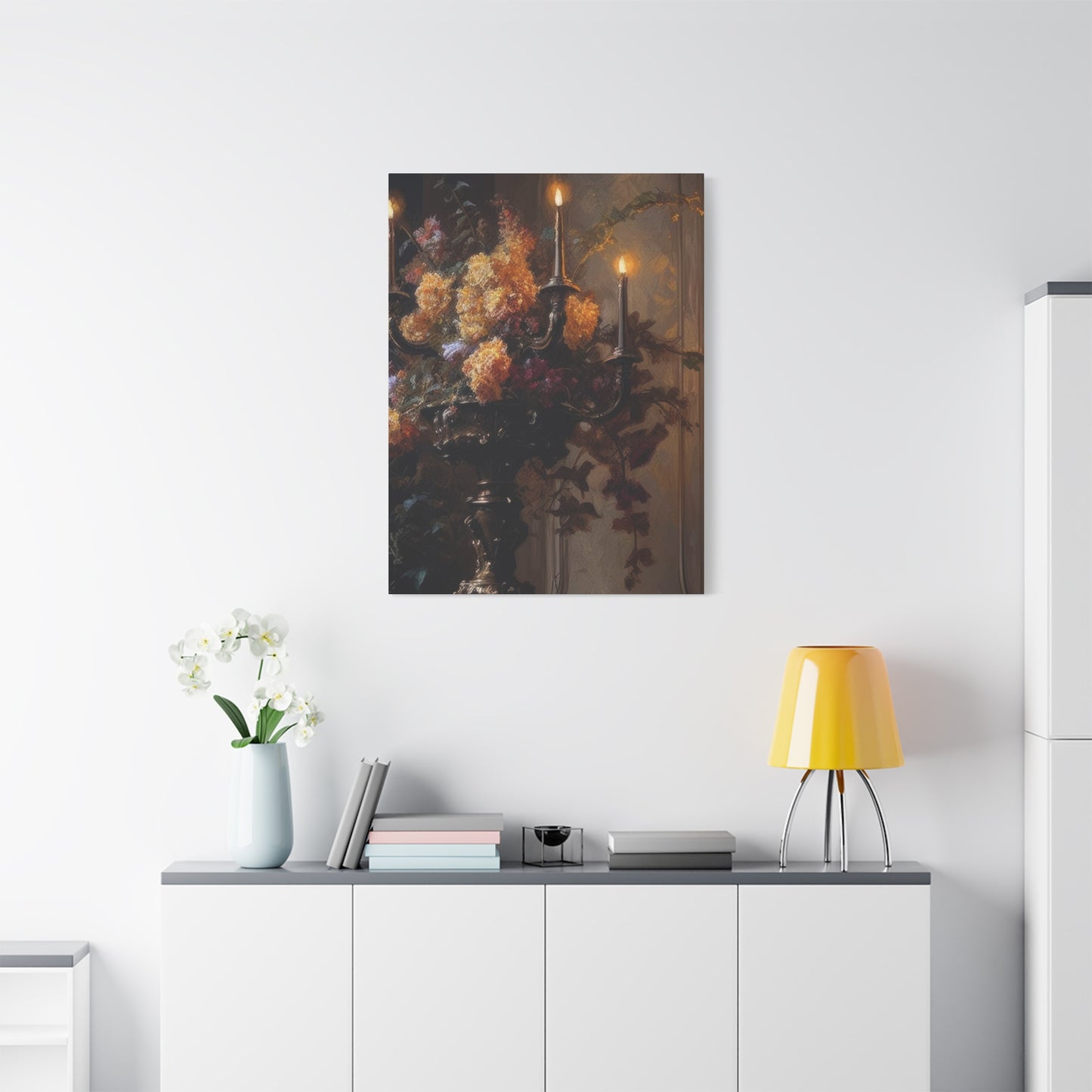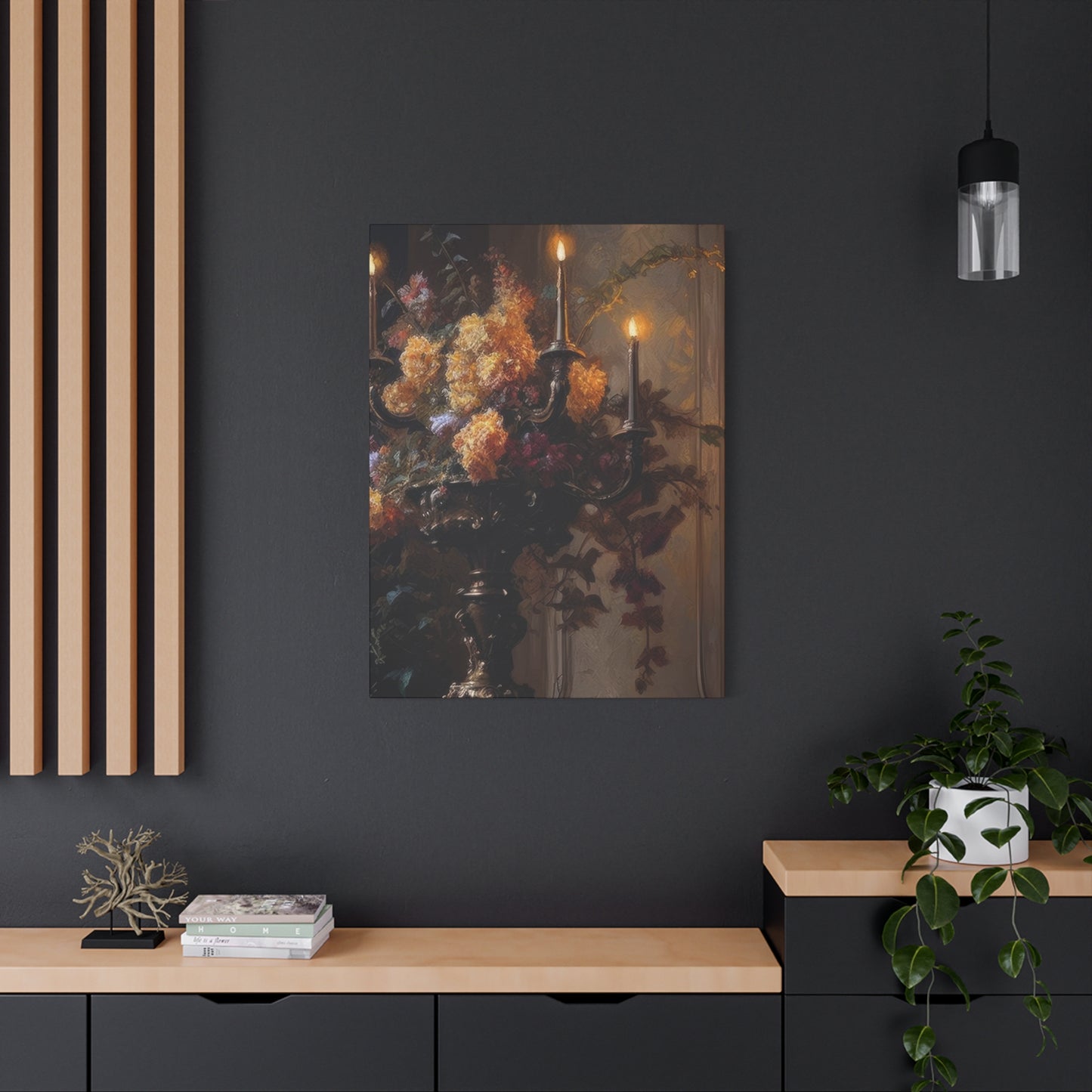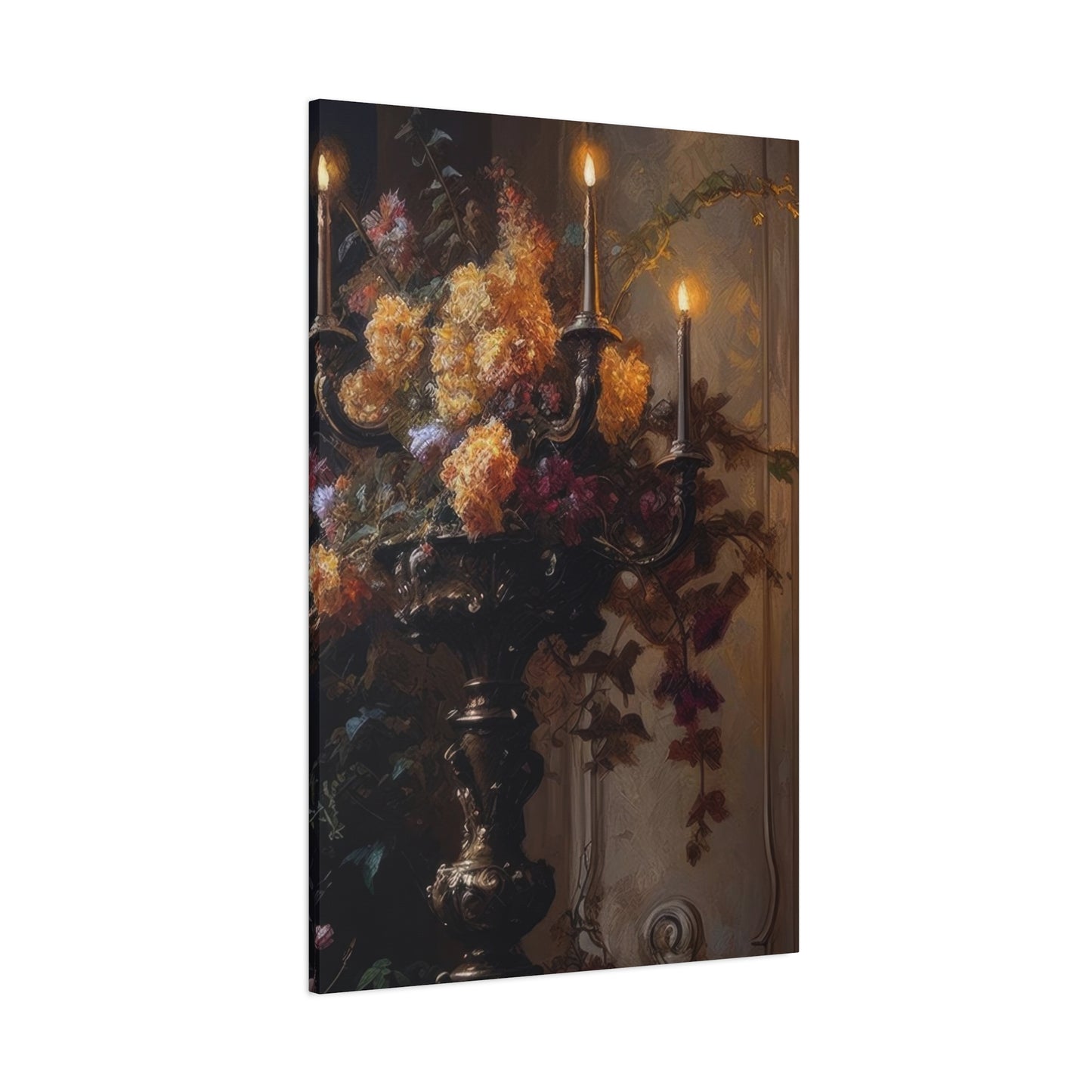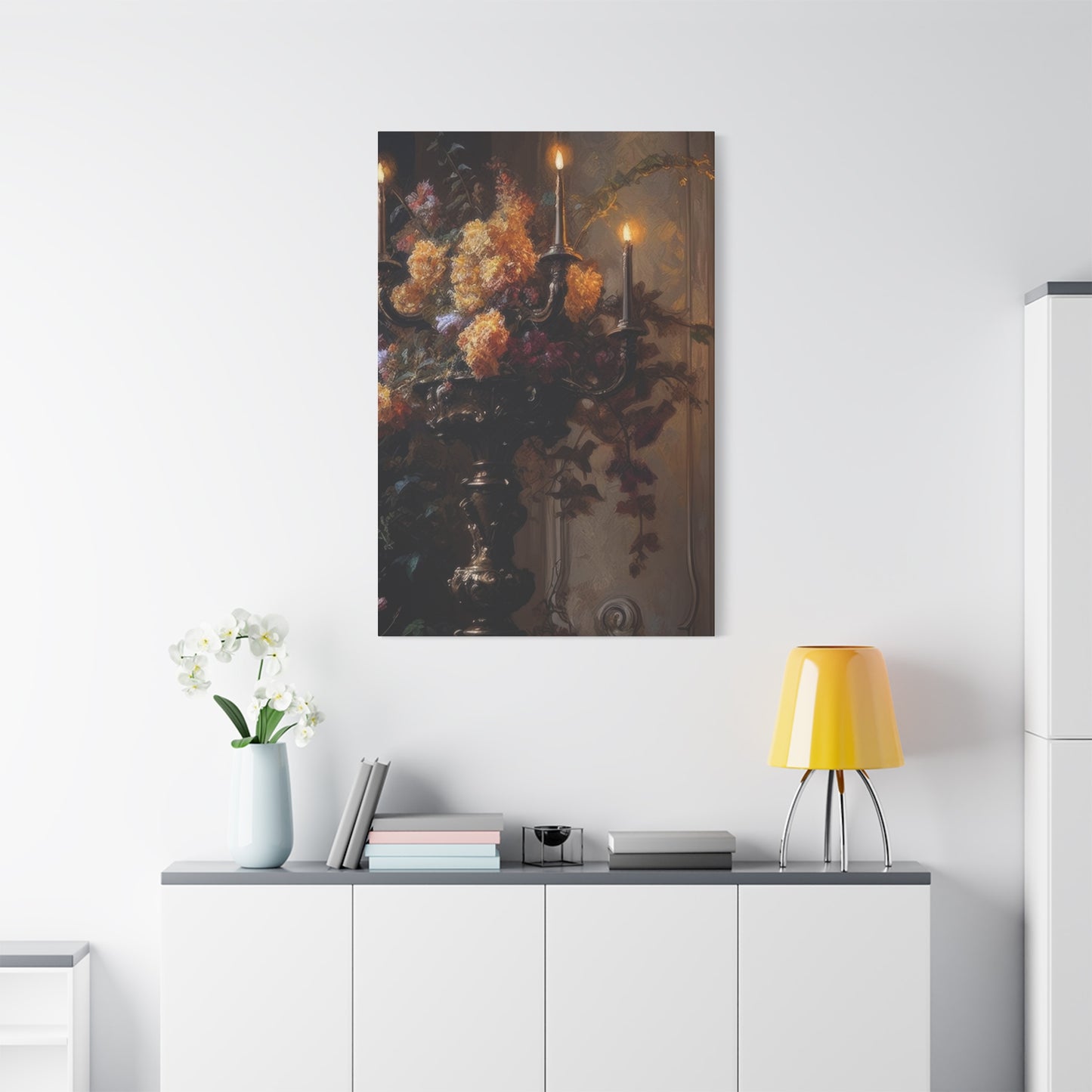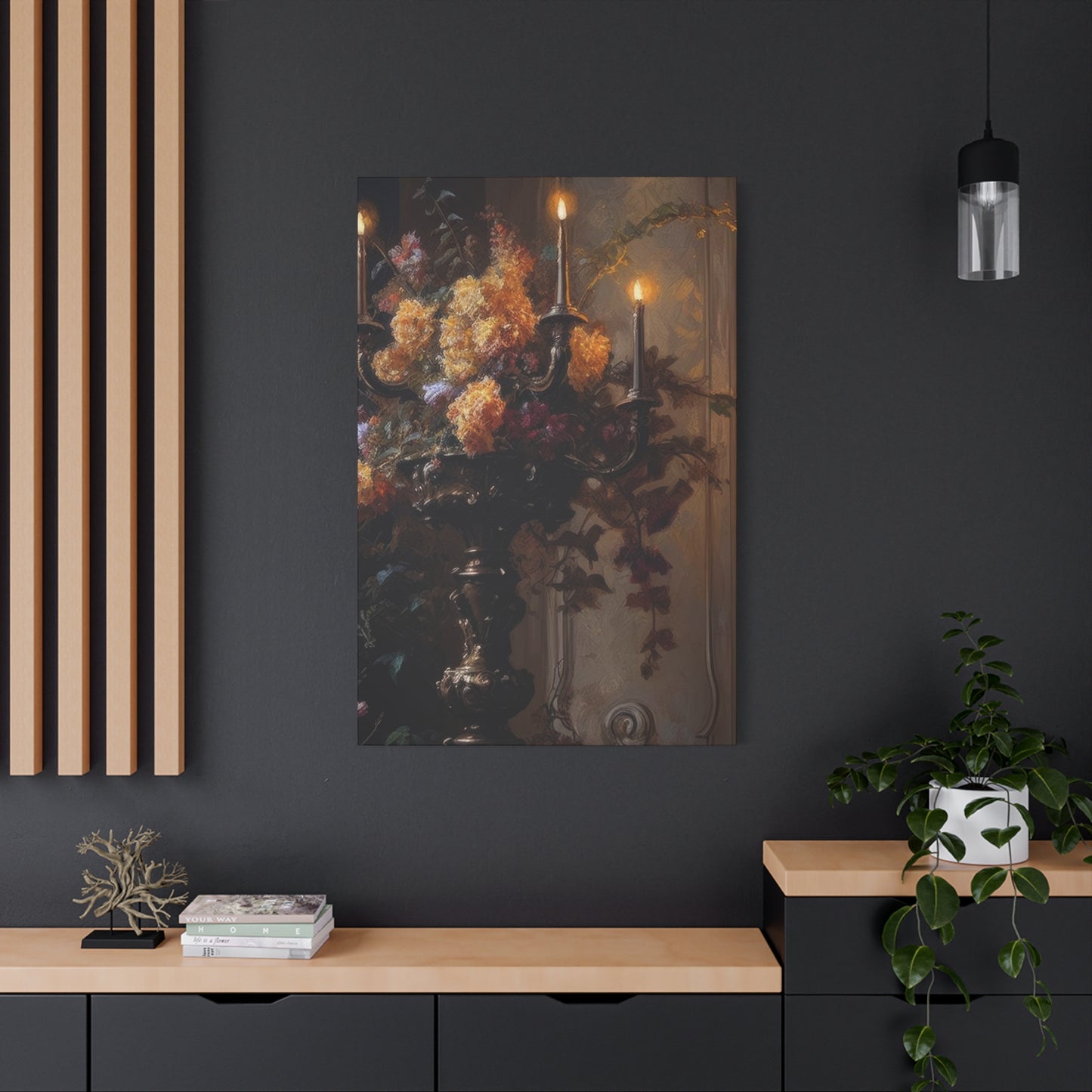Candelabra Dark Wall Art: Complete Guide to Gothic and Elegant Interior Design
Decorative elements that evoke mystery, elegance, and timeless sophistication have always held a special place in interior design. Among these elements, ornamental pieces featuring candleholders emerge as powerful visual statements that transform ordinary spaces into captivating environments. These artistic representations blend historical richness with contemporary aesthetic sensibilities, creating focal points that command attention while maintaining an air of refined mystery. Whether displayed in residential settings or commercial spaces, such artwork carries the weight of centuries-old tradition while speaking directly to modern design preferences.
The allure of these decorative pieces lies in their ability to bridge multiple design eras and aesthetic movements. From medieval castles to Victorian parlors, from gothic cathedrals to modern minimalist lofts, the symbolic power of flickering flames held by ornate metalwork has never diminished. Today's interpretations of this classic motif offer homeowners and designers endless possibilities for creating environments that feel both historically grounded and refreshingly current. The interplay of shadow and light, the suggestion of flame and smoke, and the intricate details of metalwork combine to produce visual experiences that engage viewers on multiple levels.
Embracing Gothic Aesthetics Through Candleholder Imagery
Gothic design principles emphasize dramatic contrasts, ornate detailing, and an atmosphere of romantic darkness that speaks to the soul. Artistic representations of elaborate candleholders perfectly embody these principles, offering visual narratives that connect contemporary spaces with centuries of architectural and decorative tradition. The pointed arches, intricate scrollwork, and dramatic silhouettes characteristic of gothic design find perfect expression in these pieces, which serve as windows into a world where beauty and darkness coexist harmoniously.
When selecting pieces for gothic-inspired interiors, consideration must be given to the historical context that informs this aesthetic. Gothic architecture emerged in medieval Europe as a revolutionary approach to sacred spaces, emphasizing height, light, and decorative complexity. The candleholders that illuminated these grand structures were not merely functional objects but artistic statements that reflected the craftsmanship and spiritual aspirations of their era. Modern interpretations of these historical pieces allow contemporary spaces to tap into this rich heritage, creating environments that feel both ancient and immediate.
The color palette associated with gothic aesthetics typically emphasizes deep, saturated hues that create a sense of depth and mystery. Blacks, deep purples, burgundies, and midnight blues form the foundation of this approach, with metallic accents in silver, pewter, or aged bronze providing contrast and visual interest. Artistic representations of candleholders naturally complement this palette, their shadowy forms and suggestions of metallic surfaces blending seamlessly with surrounding colors while maintaining distinct visual presence. The interplay between the darkness of the background and the lighter tones suggesting candlelight creates dynamic visual tension that draws the eye and holds attention.
Texture plays an equally important role in gothic-inspired spaces, with rough stone, weathered wood, heavy fabrics, and ornate metalwork combining to create tactile richness. Artwork featuring candleholders can enhance this textural diversity through various techniques. Paintings with heavy impasto create physical texture that mimics the dimensional quality of actual metalwork. Prints on textured papers or canvas add subtle surface interest. Mixed media pieces incorporating actual metal elements or dimensional embellishments bridge the gap between two-dimensional representation and three-dimensional object. Each approach offers distinct advantages in creating spaces that engage multiple senses simultaneously.
The scale and placement of gothic-inspired artwork significantly impact its effectiveness within a space. Large-scale pieces create immediate focal points that anchor entire rooms, commanding attention and setting the tonal direction for all other design elements. Medium-sized works allow for groupings and arrangements that tell more complex visual stories, with multiple pieces working together to create unified narratives. Smaller pieces provide opportunities for intimate viewing experiences and can be incorporated into vignettes with other decorative objects, creating layered compositions that reward close examination.
Cultivating Atmospheric Depth in Interior Spaces
The ability to create mood and atmosphere distinguishes truly exceptional interior design from merely adequate decoration. Artistic representations of candleholders excel at generating this atmospheric quality, their inherent associations with twilight, mystery, and intimate illumination making them natural choices for spaces intended to feel emotionally resonant. The psychological impact of these pieces extends beyond their visual qualities, tapping into deep cultural associations that connect darkness with introspection, romance, and sophisticated elegance.
Light and shadow form the fundamental language through which these pieces communicate their atmospheric power. Even in static two-dimensional form, representations of candleholders suggest the flickering, inconstant quality of flame light, which creates ever-shifting patterns of illumination and darkness. This suggested movement introduces visual dynamism that prevents spaces from feeling static or lifeless. The viewer's mind fills in the missing elements, imagining the dance of flames and the way light would play across surrounding surfaces, creating an active viewing experience that engages imagination and memory.
Color temperature significantly influences the mood created by these artistic pieces. Cooler tones with blue or green undertones suggest moonlight, creating ethereal, otherworldly atmospheres that feel contemplative and serene. Warmer tones with amber, orange, or gold undertones evoke the glow of actual candlelight, generating feelings of warmth, intimacy, and comfort despite darker overall palettes. Neutral tones with balanced warm and cool elements offer versatility, adapting to different lighting conditions throughout the day and complementing a wider range of surrounding colors and materials.
The concept of atmospheric perspective, borrowed from traditional painting techniques, applies equally to interior design. This principle suggests that objects appear less distinct and more muted as they recede into space, creating depth through gradual tonal shifts. Artwork featuring candleholders often employs this technique, with backgrounds fading into darkness while foreground elements maintain sharper definition and greater tonal contrast. This approach creates the illusion of depth within the artwork itself while also helping the piece integrate into the three-dimensional space it occupies, blurring boundaries between representation and reality.
Seasonal considerations affect how atmospheric artwork functions within spaces. During warmer months, darker pieces provide visual cooling effects, their shadowy depths offering psychological refuge from bright outdoor light and high temperatures. In colder seasons, these same pieces create cozy intimacy, their suggestions of candlelight and enclosed spaces reinforcing the comfort of interior environments. This year-round versatility makes them valuable investments that continue contributing to spatial quality regardless of external conditions.
Establishing Visual Drama Through Contrasting Elements
Boldness in design requires confidence and understanding of how visual elements interact to create impact. Representations of ornate candleholders naturally possess dramatic qualities through their combination of delicate details and strong overall forms, intricate patterns and solid masses, suggestions of light and depths of shadow. These inherent contrasts make them powerful tools for designers seeking to create spaces that make strong visual statements without sacrificing sophistication or elegance.
The interplay between positive and negative space becomes particularly significant in these compositions. The detailed metalwork of candleholders creates complex positive spaces filled with visual information, while the surrounding darkness serves as negative space that allows these details to read clearly. This balance prevents visual chaos while maintaining interest, guiding the viewer's eye through the composition in deliberate ways. Skilled artists manipulate this relationship, using darkness not as empty void but as active design element that shapes and defines the illuminated forms.
Compositional structure determines how effectively dramatic potential translates into actual visual impact. Symmetrical arrangements create formal elegance and stability, their balanced forms suggesting order and permanence. Asymmetrical compositions generate dynamic tension and movement, their unequal distribution of visual weight creating active viewing experiences that feel less static and more contemporary. Diagonal elements introduce direction and energy, leading the eye through the composition and connecting different areas of visual interest. Understanding these structural principles allows for informed selection of pieces that achieve desired emotional and aesthetic effects.
The concept of visual hierarchy ensures that complexity does not become confusion. Within any composition, certain elements must dominate while others recede, creating clear reading sequences that guide viewer attention. In candleholder imagery, this might mean emphasizing certain flames or candles through brighter tones or sharper details while allowing others to fade into shadow. Metalwork might be rendered with varying degrees of precision, with focal areas receiving meticulous attention while peripheral elements are suggested more loosely. These choices create visual paths that reward both quick glances and prolonged study.
Material suggestions within the artwork affect its dramatic impact and relationship to surrounding spaces. Representations that emphasize the reflective quality of polished metal create different effects than those suggesting aged, matte patinas. Glossy surfaces catch and reflect light, creating active visual elements that change with viewing angle and lighting conditions. Matte surfaces absorb light, creating more stable, contemplative presences that feel grounded and substantial. Mixed approaches, with some areas suggesting shine and others absorption, offer the complexity and visual interest that sustain long-term engagement.
Integrating Historical Elements into Contemporary Settings
The challenge and opportunity of incorporating historically-inspired pieces into modern spaces lies in creating dialogue between past and present without allowing either to dominate completely. Artwork featuring traditional candleholder designs brings historical weight and cultural resonance to contemporary interiors, connecting inhabitants to broader temporal and cultural narratives while maintaining relevance to current lifestyles and aesthetic preferences. Success in this integration requires understanding both historical context and contemporary design principles, finding balance points where each enhances the other.
Victorian design aesthetics, with their emphasis on ornament, rich colors, and emotional resonance, share significant common ground with gothic sensibilities. Both movements valued craftsmanship, decorative complexity, and the emotional power of carefully designed environments. Representations of elaborate candleholders fit naturally into spaces inspired by either movement, their ornate forms and dramatic presence aligning with the core values these aesthetics express. However, successful integration requires editing and restraint, selecting pieces that capture essential qualities without overwhelming spaces with excessive decoration.
The concept of adaptive reuse applies to decorative elements as effectively as to architectural spaces. Just as historic buildings find new purposes while maintaining their essential character, historically-inspired artwork can serve contemporary functions while honoring traditional forms. A representation of an elaborate gothic candleholder might anchor a modern minimalist space, providing the single dramatic element that prevents the room from feeling cold or sterile. The same piece in a more traditionally decorated space might serve as one element within a larger decorative scheme, contributing to cumulative effect rather than standing alone.
Material and finish choices significantly impact how successfully historical references integrate into contemporary contexts. Heavily ornate gold frames might feel appropriate in maximalist or traditionally decorated spaces but could create dissonance in cleaner, more modern environments. Simple frames in matte black, natural wood, or brushed metal allow the artwork itself to speak while maintaining visual clarity and contemporary relevance. Frameless presentations, with images printed directly on substantial materials like wood panels or metal sheets, push further toward modern aesthetics while still honoring the historical content of the imagery.
The principle of selective authenticity allows for creative interpretation rather than literal historical recreation. Rather than attempting to perfectly replicate Victorian or medieval interiors, contemporary designers can extract essential qualities and reinterpret them through modern sensibilities. This might mean pairing artwork featuring historical candleholder designs with clean-lined modern furniture, creating productive tension between ornamentation and simplicity. It might involve using traditional imagery in unexpected scales, creating oversized pieces that transform intimate historical objects into commanding contemporary statements. These approaches honor history while remaining firmly grounded in present-day design thinking.
Establishing Commanding Presence Through Strategic Placement
Creating focal points that anchor spaces and direct attention requires understanding of visual weight, compositional balance, and human perception. Artwork featuring dramatic candleholder imagery possesses inherent qualities that support focal point status, their dark tones creating visual weight, their vertical forms drawing the eye upward, and their detailed complexity inviting sustained attention. However, realizing this potential requires thoughtful consideration of placement, surrounding elements, and viewing conditions.
The relationship between artwork and furniture determines much about how successfully pieces function as focal points. Positioning a substantial piece above a sofa, bed, or console table creates natural groupings that feel intentional and grounded. The horizontal line of the furniture provides visual foundation for the vertical emphasis of the artwork, creating stable compositions that feel balanced despite their dramatic qualities. Scale relationships matter significantly here, with artwork generally working best when it occupies roughly two-thirds to three-quarters the width of the furniture below it, large enough to command presence without overwhelming the supporting element.
Wall color and texture dramatically affect how artwork reads within spaces. Against light walls, darker pieces create maximum contrast, their shadowy depths standing out distinctly and commanding immediate attention. This approach works well when the goal is strong visual impact and clear focal point establishment. Against darker walls, these same pieces create more subtle effects, blending somewhat with their surroundings while still maintaining presence through their internal contrasts and detailed complexity. This approach suits spaces seeking sophisticated ambiance over dramatic impact, creating environments that reveal their qualities gradually rather than immediately.
Lighting considerations extend beyond simply ensuring adequate illumination for viewing. The quality, direction, and color of light significantly impact how artwork appears and feels. Picture lights mounted above frames create focused illumination that draws attention and enhances visibility of details, though they can also create glare if not properly positioned. Track lighting or adjustable spotlights offer flexibility, allowing precise control over how light strikes the surface and which areas receive emphasis. Natural light from windows creates changing conditions throughout the day, with morning and evening light typically offering warmer tones that complement darker imagery, while midday light might create harder contrasts that affect the piece's mood.
The concept of visual breathing room ensures that focal points maintain their power rather than competing with surrounding elements. Allowing adequate empty wall space around significant pieces prevents visual crowding that dilutes impact. This negative space also provides psychological breathing room, giving viewers' eyes places to rest between periods of focused attention on the artwork. The amount of space needed varies with the piece's size, complexity, and visual weight, but general principles suggest leaving at least several inches of clear space on all sides, with larger pieces often benefiting from substantially more generous surroundings.
Enhancing Enigmatic Qualities Through Design Choices
Mystery and intrigue in interior spaces arise from elements that suggest more than they explicitly reveal, creating layers of meaning and experience that unfold over time. Representations of candleholders in darkened settings naturally possess these qualities, their partial illumination and areas of deep shadow creating zones of clarity and obscurity that engage imagination and curiosity. Maximizing these enigmatic qualities requires understanding how visual information can be revealed and withheld, creating viewing experiences that balance accessibility with depth.
The technique of chiaroscuro, with its dramatic contrasts between light and dark, forms the foundation of mysterious visual effects. This approach, perfected by baroque masters like Caravaggio and Rembrandt, uses shadow as active design element rather than mere absence of light. In representations of candleholders, this might mean illuminating only portions of the metalwork, allowing other sections to disappear into darkness. Flames might glow brilliantly while their sources remain obscured. Backgrounds might contain suggested forms that never quite resolve into clear recognition. These choices create active viewing experiences where perception and imagination collaborate to construct complete mental images.
Atmospheric effects like smoke, mist, or haze add layers of visual complexity while softening hard edges and creating depth. In artwork featuring candleholders, suggestions of smoke rising from flames blur boundaries between solid objects and empty space, creating transitional zones that feel ethereal and otherworldly. These effects can be subtle, barely perceptible hazes that soften the overall image, or more pronounced, with distinct smoke forms creating their own compositional elements. The degree of atmospheric intervention affects how mysterious or accessible the image feels, with heavier effects pushing toward abstraction and lighter touches maintaining clearer representational reading.
The decision of how much detail to include or withhold significantly impacts mysterious qualities. Hyperrealistic rendering that shows every texture, every reflection, every minute detail creates different effects than looser, more suggestive approaches that indicate forms without fully describing them. Both approaches have merit depending on desired outcomes. Detailed realism can create mystery through sheer complexity, presenting so much visual information that full comprehension requires extended study. Suggestive looseness creates mystery through ambiguity, leaving gaps for imagination to fill. Many successful pieces employ both strategies, rendering focal areas with precision while allowing peripheral elements to remain less defined.
The use of symbolic or narrative elements introduces intellectual mystery alongside visual intrigue. A single candleholder might simply be a beautiful object, but multiple holders arranged in specific patterns might suggest ritual or ceremony. The inclusion of other objects like books, hourglasses, or flowers introduces additional layers of meaning, connecting to vanitas traditions that contemplate mortality and the passage of time. These symbolic dimensions need not be heavy-handed or obvious; subtle suggestions that viewers might notice consciously or absorb unconsciously create richness without didacticism.
Cultivating Romantic Atmosphere Through Decorative Choices
Romance in interior design transcends literal hearts and flowers, encompassing broader qualities of emotional warmth, intimate scale, and sensory richness. Spaces that feel romantic invite relaxation and connection, supporting both solitary reflection and shared experiences. Artistic representations of candleholders contribute significantly to romantic atmospheres through their associations with intimate lighting, their suggestions of quiet evenings and private moments, and their inherent beauty that elevates everyday surroundings into something special.
The psychology of candlelight has been understood throughout human history, its warm glow creating feelings of safety, intimacy, and calm that electric lighting rarely matches. Even in representation, these associations remain powerful, triggering emotional responses that shape how spaces feel. Artwork suggesting candlelight can transform harsh or impersonal rooms into welcoming environments, their visual warmth compensating for less-than-ideal actual lighting conditions. This effect proves particularly valuable in spaces that receive limited natural light or that rely primarily on overhead fixtures, which can feel cold and institutional without supplementary warming elements.
Color plays a crucial role in romantic atmosphere creation, with warmer palettes generally proving more effective than cooler ones. However, darkness does not preclude warmth; deep burgundies, chocolates, and plum tones create romantic richness while maintaining the dramatic qualities of darker palettes. Metallic accents in warm golds, coppers, and bronzes add sparkle and luxury without introducing garish brightness. Even within predominantly dark compositions, careful use of warm undertones in shadows prevents coldness, ensuring that mystery remains inviting rather than forbidding.
The concept of layering applies to romantic spaces, with multiple elements working together to create cumulative emotional effect. Artwork featuring candleholders might form one layer, contributing visual interest and atmospheric suggestion. Actual candles in complementary holders create another layer, adding real flickering light and subtle scent. Soft textiles like velvet cushions, silk drapes, or plush throws introduce tactile warmth. Low ambient lighting from multiple sources rather than single overhead fixtures creates gentle illumination that flatters and soothes. Music, scent from diffusers or incense, and even temperature control through heating or cooling complete the multisensory experience. Each layer reinforces the others, creating environments that engage completely rather than merely visually.
Personal meaning amplifies romantic qualities, transforming generic decoration into something significant and irreplaceable. Artwork selected together by partners, pieces that commemorate important moments or places, or images that resonate with shared values or interests carry emotional weight beyond their aesthetic qualities. Even for individuals, pieces that connect to personal history, aspirations, or identity create deeper satisfaction than those chosen solely for appearance. This personal dimension transforms decoration into self-expression, making spaces feel authentically connected to their inhabitants rather than styled according to external formulas.
Transforming Spatial Character Through Visual Weight
The power of art to fundamentally alter how spaces feel and function represents one of interior design's most valuable tools. Single well-chosen pieces can shift entire rooms' character, introducing qualities of drama, elegance, mystery, or sophistication that permeate beyond the artworks' physical boundaries. Representations of elaborate candleholders possess particularly strong transformative potential through their inherent drama, historical associations, and atmospheric qualities that project throughout surrounding spaces.
The concept of visual weight helps explain this transformative power. Like physical weight, visual weight affects balance and perceived stability within spaces, but it operates according to different principles. Dark colors carry more visual weight than light ones, complex patterns more than simple ones, detailed areas more than plain ones. Artwork featuring dark-toned candleholder imagery possesses significant visual weight through its combination of deep colors, intricate details, and complex forms. This weight acts as anchor within rooms, grounding other elements and providing fixed point around which other design decisions can revolve.
The principle of contrast amplification explains how single elements can affect entire spaces. Introducing one dramatically different element into otherwise unified environments creates tension that makes both the unique element and the surrounding consistency more noticeable. A dark, ornate representation of candleholders in a light, minimalist space calls attention to both the artwork's distinctiveness and the room's restraint. Neither element would be as striking without the other, the contrast between them creating dynamic visual interest that exceeds the sum of parts. This approach requires confidence and restraint, resisting the urge to add too many contrasting elements that would dilute the effect.
The phenomenon of perceptual spread describes how qualities of one element influence perception of adjacent areas. Color from artwork appears to tint nearby walls, making them seem warmer or cooler depending on the piece's dominant tones. The mood created by imagery affects how we interpret surrounding spaces, with mysterious artwork making whole rooms feel more enigmatic, romantic pieces enhancing overall warmth. This psychological effect means that artwork's influence extends far beyond its physical dimensions, shaping experience of entire environments through associative processes.
Scale manipulation represents another transformative strategy, using artwork in unexpected sizes to challenge assumptions and create surprise. Oversized representations of traditionally intimate objects like candleholders create surreal effects, transforming familiar items into imposing presences that dominate spaces and demand attention. This approach works particularly well in rooms with high ceilings or expansive walls that might otherwise feel empty or impersonal. Conversely, displaying smaller pieces at unexpected scales, perhaps through unusual hanging heights or unexpected locations, creates intimate moments within larger spaces, drawing viewers close and rewarding focused attention.
Achieving Universal Versatility Through Thoughtful Selection
The most valuable decorative elements adapt to various contexts, functioning effectively in multiple types of spaces and supporting different design directions. Artwork featuring candleholder imagery demonstrates remarkable versatility, working equally well in residential and commercial settings, traditional and contemporary spaces, formal and casual environments. Understanding the qualities that enable this adaptability allows for informed selection and deployment that maximizes return on investment while maintaining design flexibility as tastes and needs evolve.
The timeless nature of candle symbolism provides foundation for this versatility. Across cultures and throughout history, flames have represented illumination, hope, remembrance, celebration, and spirituality. These universal associations ensure relevance regardless of specific design contexts or personal backgrounds. A piece meaningful to one viewer for its gothic associations might speak to another through connections to religious ceremony, and to yet another simply through appreciation of light and shadow interplay. This multiplicity of possible meanings allows broad appeal without sacrificing depth or significance.
Neutral elements within compositions support versatility by providing visual anchors that complement various color schemes and design approaches. While dramatic and specific in their imagery, many representations of candleholders employ relatively limited color palettes dominated by blacks, grays, and metallic tones. These neutral foundations work with virtually any surrounding colors, from bold jewel tones to soft pastels, from warm earth tones to cool blues and greens. This chromatic flexibility eliminates concerns about clashing with existing or future design schemes, allowing pieces to remain relevant through multiple design iterations.
Stylistic ambiguity between historical reference and contemporary interpretation broadens applicability across design movements. Pieces that clearly reference historical periods might feel out of place in aggressively modern settings, while purely abstract or contemporary works might not satisfy those drawn to traditional aesthetics. Artwork that balances these impulses, acknowledging historical forms while interpreting them through contemporary sensibilities, appeals to wider audiences and functions in more varied contexts. This balanced approach respects tradition without being bound by it, creating connections to past while remaining firmly grounded in present.
Quality of execution transcends stylistic categories, commanding respect and appreciation regardless of specific design contexts. Pieces demonstrating superior craftsmanship, thoughtful composition, and skilled technique maintain value and relevance even as trends shift and tastes evolve. Investment in quality over fashionability ensures that choices remain satisfying long after initial acquisition, aging gracefully rather than feeling dated. This principle applies equally to original artwork, limited edition prints, and high-quality reproductions, with execution quality mattering more than medium or production method.
Appreciating Craftsmanship and Attention to Refinement
Excellence in representational art requires technical mastery, aesthetic sensitivity, and sustained attention to countless small decisions that collectively determine final quality. Artwork featuring intricate candleholder designs particularly benefits from careful execution, its complexity demanding precision and patience that separate exceptional pieces from adequate ones. Understanding and appreciating these qualities of craftsmanship enhances both selection processes and viewing experiences, deepening satisfaction with chosen pieces.
The rendering of metalwork presents particular technical challenges, requiring artists to capture both the solidity of material and the reflective qualities that bring it to life. Metal surfaces catch and throw light, creating bright highlights and deep shadows that describe three-dimensional form through two-dimensional means. Variations in finish from highly polished to completely matte, from pristine to corroded, require different representational approaches. Successful renderings convince viewers of metal's presence through careful attention to these optical phenomena, creating illusions of substance and weight through paint, ink, or digital processes.
The depiction of flame introduces elements of movement and transience into otherwise static compositions. Unlike solid objects with fixed forms, flames constantly change, their shapes shifting with air currents and fuel consumption. Capturing this quality of movement while maintaining compositional coherence requires balancing accuracy with artistic license, suggesting flicker and flow without creating chaos. The glow that flames cast on surrounding objects requires attention to how light affects color and value, warming tones and creating gradients that describe spatial relationships.
Background treatment significantly impacts overall composition, with choices about detail, darkness, and atmospheric effects shaping how primary subjects read. Completely black backgrounds create maximum contrast and drama, isolating subjects against void and focusing all attention on illuminated forms. Subtly textured or graduated backgrounds maintain drama while introducing nuance and depth, suggesting environmental context without explicit description. More developed backgrounds with architectural elements or other objects create narrative possibilities, placing candleholders within specific settings that add layers of meaning and visual interest.
Surface quality in physical artworks adds dimension that digital images cannot fully convey, making direct viewing experiences important for full appreciation. The texture of canvas, the sheen of quality prints, the depth of paint layers, the richness of archival inks all contribute to sensory experiences that photographs reduce or eliminate. Frame selection and quality similarly impact presentation, with materials, finishes, and construction quality affecting how artwork appears and how long it maintains optimal condition. Investment in proper framing and materials preservation protects both aesthetic and financial value over time.
Exploring Shadowy Aesthetics and Their Appeal
The artistic exploration of darkness and shadow represents a long tradition in visual arts, from baroque masters' dramatic chiaroscuro to romantic painters' moonlit landscapes to contemporary photographers' moody environmental portraits. This preoccupation with shadow reflects more than technical interest in rendering challenges; it speaks to fundamental aspects of human experience and perception, our attraction to mystery, and the emotional power of what remains partially revealed rather than fully exposed.
The philosophical dimension of darkness connects to concepts of the sublime, that quality of experience that combines awe with elements of fear or overwhelm. Unlike beauty, which typically produces pleasure and comfort, the sublime challenges and unsettles while simultaneously attracting and fascinating. Artwork that emphasizes shadow and darkness engages this aesthetic category, creating viewing experiences that feel significant and affecting rather than merely pleasant. This quality makes such pieces particularly effective for viewers seeking depth and emotional resonance in their environments.
Cultural associations with darkness vary across societies and historical periods, encompassing both negative connotations like danger, evil, and ignorance, and positive ones like mystery, sophistication, and intimate privacy. Contemporary western culture generally views darkness more positively than many historical periods did, associating it with elegance, drama, and psychological depth rather than primarily with threat or moral failing. This shift enables broader appreciation of darker aesthetics in domestic spaces, which previously might have reserved such approaches for religious or theatrical contexts.
The psychological impact of darker environments and imagery relates to concepts of refuge and intimacy. Bright, open spaces create feelings of exposure and public visibility, appropriate for social interaction and active tasks but less conducive to introspection or relaxation. Darker spaces create cocoon-like enclosure, defining boundaries and establishing separate zones within larger environments. Artwork contributing to this darker aesthetic reinforces these qualities, helping create psychological as well as visual sanctuary. This effect proves particularly valuable in contemporary life, where constant connectivity and stimulation create needs for retreat spaces that feel truly separate from everyday demands.
The aesthetic principle of selective emphasis applies powerfully to darker compositions. When most of the visual field remains in shadow, elements that emerge into light gain disproportionate significance. This focusing effect directs attention precisely where artists intend, creating clear visual hierarchies and ensuring that complexity remains readable rather than chaotic. The eye naturally moves to lighter areas within dark fields, following the artist's guidance through composition. This predictability of visual response allows sophisticated control over viewing experiences, choreographing how attention moves through images.
Incorporating Sophisticated Elements in Living Spaces
The central gathering spaces in homes serve multiple functions, from entertaining guests to family relaxation, from displaying cherished objects to providing backgrounds for daily life. Artwork in these multipurpose spaces must satisfy varied requirements, appearing sophisticated enough for formal occasions while remaining comfortable for everyday living. Representations of ornate candleholders meet these diverse needs through their combination of elegance and approachability, their balance of drama and refinement.
The relationship between artwork and furniture arrangement determines much about how living spaces function and feel. Pieces hung above sofas or seating areas become natural focal points during conversations, providing visual interest for guests while contributing to overall ambiance. The key lies in maintaining appropriate scale relationships, with artwork large enough to anchor the space without overwhelming seating below. Multiple smaller pieces can work equally well as single large ones, with arrangements creating unified compositions that hold together visually while offering varied elements for sustained interest.
The consideration of viewing distances affects what types of artwork work best in different positions. Pieces positioned across from primary seating receive viewing from several feet away, allowing larger scale and looser handling that read clearly at distance. Artwork adjacent to seating or in circulation paths receives closer viewing, making finer details and more intricate work appropriate. Understanding these viewing conditions during selection ensures that pieces can be appreciated as intended, with neither excessive detail in distance-viewed pieces nor insufficient visual interest in closely-viewed ones.
The principle of thematic coherence without literal matching creates sophisticated rather than overly coordinated spaces. Rather than matching all decorative elements in obvious ways, successful design creates relationships through shared qualities like color families, tonal ranges, stylistic periods, or emotional qualities. Artwork featuring candleholders might connect to other elements through shared dark tones, similar ornate detailing, common historical references, or parallel emphasis on shadow and light. These subtle connections create unity without uniformity, allowing individual pieces to maintain distinctiveness while contributing to coherent overall environments.
Seasonal flexibility in living spaces allows refreshment without complete redesign, maintaining interest and responding to changing light conditions and usage patterns. Darker, more dramatic artwork feels particularly appropriate during fall and winter months, when evening hours dominate and cozy intimacy becomes priority. These same pieces continue functioning during warmer months but might be balanced by lighter elements or repositioned to create different effects. This flexibility makes quality pieces valuable long-term investments that support varied design expressions over time.
Creating Inviting Warmth in Intimate Environments
The challenge of making darker or more dramatic spaces feel welcoming rather than forbidding requires understanding of how visual warmth operates independently from literal brightness. Spaces can feel warm and inviting despite low light levels or dark colors through careful attention to color temperature, texture, scale, and the integration of elements that suggest comfort and human presence. Artwork featuring candleholder imagery contributes to these warm atmospheres through its associations with intimate lighting and the inclusion of warm metallic tones that balance darker surrounding colors.
Color temperature proves more influential than color value in determining perceived warmth. Cool blues, greens, and purples can feel cold even when quite light, while warm browns, burgundies, and chocolates feel cozy even when very dark. Within apparently neutral grays and blacks, warm and cool versions exist, with warm versions containing slight brown, red, or gold undertones while cool versions lean toward blue or green. Selecting artwork with warm-toned darks ensures that dramatic effects do not become cold or hostile, maintaining invitation even within mystery.
The concept of the golden hour translates effectively from photography to interior design. That quality of light shortly after sunrise or before sunset, when sun angles create warm, glowing illumination, produces effects widely recognized as beautiful and emotionally resonant. Artwork that captures or suggests this quality of light, whether through warm color temperatures or through suggested illumination from candles, brings similar emotional qualities into spaces. The glow of represented flames functions analogously to golden hour sunlight, creating warm pockets of illumination within darker compositions.
Human scale elements prevent spaces from feeling impersonal or institutional regardless of color scheme or light levels. Artwork depicting human-made objects like candleholders inherently possesses this quality, its subjects designed for human hands and human spaces. This connection to human activity and presence, even when no figures appear in images, maintains essential relationship between spaces and their inhabitants. The ornate craftsmanship visible in detailed metalwork speaks to human skill and artistic impulses, reminding viewers of the creative spirit that connects across centuries and cultures.
Comfort factors extending beyond pure visual qualities determine how successfully spaces function as intimate retreats. Physical comfort through appropriate temperature, seating that supports relaxation, textiles that invite touch all contribute to environments where people want to spend time. Acoustic qualities that dampen external noise or create pleasant ambient sound enhance privacy and calm. Even subtle scent from candles, incense, or essential oils can significantly impact how spaces feel. Artwork forms one element within these complex multisensory environments, contributing essential visual dimension while working synergistically with other comfort factors.
Discovering Victorian Aesthetic Principles and Their Modern Application
The Victorian era, spanning much of the nineteenth century, developed distinctive aesthetic principles that continue influencing design today. Characterized by ornate decoration, rich colors, attention to craftsmanship, and layers of decorative elements, Victorian design reflects both the industrial revolution's possibilities and romantic movement's emphases on emotion, history, and individual expression. Understanding these historical principles enables contemporary application that respects historical sources while avoiding stagnant reproduction or theme-park kitsch.
The Victorian interest in gothic revival brought medieval aesthetic elements into nineteenth-century contexts, creating hybrid styles that referenced historical forms while serving contemporary needs. This embrace of earlier periods reflected romantic fascination with history, particularly idealized medieval past seen as more authentic and spiritually meaningful than industrial present. Candleholders from this era often combined gothic elements like pointed arches and trefoil patterns with Victorian additions like more elaborate floral motifs or increased mechanical complexity. Contemporary representations of these designs carry both medieval and Victorian associations, offering rich historical layering.
The principle of horror vacui, or fear of empty space, manifested in Victorian tendency toward decorative abundance, with surfaces covered in patterns, rooms filled with objects, and ornament applied generously to functional items. While contemporary preferences generally favor more restraint, carefully controlled elements of this maximalist approach can create richness and visual interest. Single dramatic piece featuring elaborate candleholder design might satisfy desire for ornamental complexity while maintaining overall spatial clarity that contemporary life requires. This selective application of Victorian principles offers middle ground between stark minimalism and overwhelming excess.
The Victorian emphasis on sentiment and symbolism added layers of meaning to decorative objects, with flowers, colors, and specific motifs carrying coded messages understood by contemporary viewers. Candles and candleholders particularly connected to themes of memory, mourning, hope, and spirituality, appearing prominently in both domestic and religious contexts. Modern viewers might not consciously recognize all historical associations, but emotional resonance often operates beneath full awareness. Artwork incorporating these symbolically loaded elements taps into cultural memory, creating effects that feel significant even when precise meanings remain elusive.
Quality and craftsmanship represented core Victorian values, with appreciation for visible skill and attention to detail. This emphasis partly reflected reaction against early industrial products that prioritized cheapness over quality, and partly continued longer traditions of valuing artisan skills. Contemporary applications of Victorian aesthetic principles benefit from similar emphasis on quality, seeking pieces demonstrating superior execution rather than settling for whatever proves readily available. This commitment to quality ensures that historically-inspired pieces feel substantial and worthy of their references rather than like cheap imitations trading.
Conclusion:
Candelabra Dark Wall Art: Complete Guide to Gothic and Elegant Interior Design explores the sophisticated interplay of shadow, light, and dramatic design in modern interiors. Dark-themed candelabra wall art evokes mystery, elegance, and timeless charm, offering a striking aesthetic that transcends conventional décor. These pieces are more than decorative elements; they are statements of mood, narrative, and artistic intention. Through careful curation, they enable homeowners to transform ordinary spaces into evocative environments where gothic refinement meets contemporary style.
At the heart of this style is the candelabra itself—a symbol of illumination, grandeur, and historical sophistication. In art, it conveys both literal and metaphorical light, casting intricate patterns and shadows that interact dynamically with the surrounding space. When rendered in dark, gothic tones, these images accentuate contrasts, creating visual depth and dramatic tension. The effect is simultaneously captivating and contemplative, inviting viewers to engage with the artwork on both an emotional and intellectual level.
From a design perspective, candelabra dark wall art offers remarkable versatility. Classic, realistic depictions can enhance traditionally styled interiors, emphasizing historical elegance, intricate craftsmanship, and ornamental detail. Meanwhile, modern or abstract interpretations allow for seamless integration into contemporary, minimalist, or eclectic spaces, providing sophisticated focal points without overwhelming the room. The interplay of darkness, light, and texture ensures that each piece can harmonize with a variety of color palettes, furniture styles, and architectural elements, adding depth and personality to interiors.
Color, tone, and contrast are fundamental in achieving the desired gothic effect. Deep blacks, charcoals, and muted metallics create a luxurious, mysterious atmosphere, while selective highlights mimic candlelight or metallic reflection, adding dimensionality and focus. These visual techniques enhance the perception of texture, form, and spatial depth, allowing viewers to appreciate the intricacies of design. When combined with complementary elements such as velvet fabrics, dark wood, or wrought iron furnishings, candelabra wall art reinforces a cohesive aesthetic that is both dramatic and elegant.
Beyond aesthetics, dark candelabra art evokes emotion and narrative. The gothic elements symbolize sophistication, introspection, and timeless beauty. By incorporating these artworks, homeowners create interiors that feel layered, deliberate, and emotionally resonant. The dramatic imagery encourages reflection, inviting viewers to consider the interplay between light and darkness, history and modernity, and ornamentation and minimalism. This emotional dimension transforms walls into spaces of meaning, enhancing not only the visual appeal of a room but also its experiential and psychological impact.
Technically, high-quality candelabra dark wall art emphasizes precision in composition, attention to detail, and mastery of light and shadow. Artists utilize contrast, shading, and perspective to evoke dimensionality, emphasizing both the structure of the candelabra and the surrounding environment. This careful attention ensures that the artwork commands attention while remaining harmonious within the space, allowing each piece to function as both a decorative and narrative element. Mixed media or digital renderings often enhance this effect, adding texture, depth, and visual intrigue.
In addition, these artworks provide creative flexibility in interior styling. A single candelabra canvas can serve as a dramatic centerpiece, anchoring a room and setting the tone for surrounding décor. Multiple pieces can be arranged to create a gallery wall that reinforces thematic cohesion, layering gothic motifs with modern accents to cultivate a refined yet edgy ambiance. Their adaptability makes them suitable for various rooms, from living areas and studies to bedrooms or even entryways, creating a consistent narrative of elegance, sophistication, and artistry.
Ultimately, Candelabra Dark Wall Art demonstrates how gothic and elegant design can coexist with contemporary interior trends. By integrating these artworks, homeowners transform walls into focal points of narrative, sophistication, and emotional resonance. The visual interplay of shadow, texture, and form elevates interiors beyond mere decoration, establishing spaces that are immersive, thoughtful, and visually compelling.
In essence, Candelabra Dark Wall Art: Complete Guide to Gothic and Elegant Interior Design illustrates that dark, ornate artwork can redefine the ambiance of modern interiors. Through careful selection and placement, these pieces infuse living spaces with drama, elegance, and timeless beauty, offering an enduring aesthetic that captivates the senses, stimulates reflection, and celebrates the refined artistry of gothic-inspired design.

















